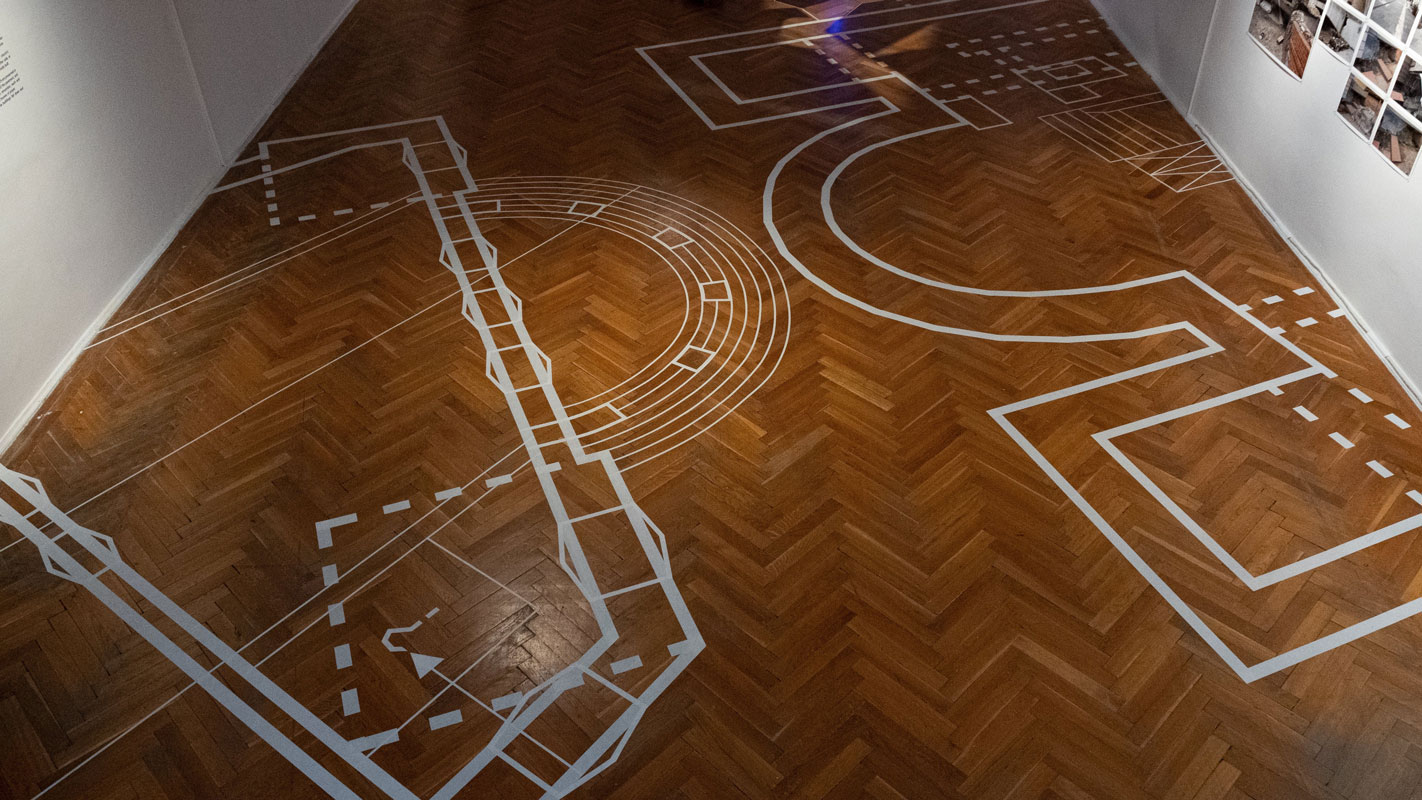Projekte
The Bush is on Fire
Site-specific-Installation
The installation The Bush Is On Fire deals with the question of the politicisation of community space: In which form does state power manifest itself in public spaces, democratically or dictatorially? Which meaning and message do city leaders suggest about community spaces for its citizens?
The Bush Is On Fire is an intermedial, site-specific artwork that was exhibited in the Csók István Képtár Gallery, with the intention to dis-play it in the future on „Várkörút“ Road in Székesfehérvár.
As part of the installation, the tape artist Atau Hámos (www.tapeartatau.com) has used white tape to mark, in a reduced scale, the floorplans of both buildings on the floor of the Csók István Képtár gallery. The floorplans are marked in such a way that the exhibition space is divided into two parts.
Two photo tableaux hang side by side on the wall. They show the results of the notation for the basilica and synagogue. The photo series also represent the basic material for the two photofilms.
On the wall to the left, the photofilm of the basilica is running on a touchscreen. Directly opposite on the righthand wall, the introductory photofilm about the synagogue is being screened on another touchscreen.
The poetic narrative is an essential element of the installation: That which the pictures cannot show is said and written; that which can- not be put into words is viewable. Thus, Stephanus and Stefánia enter into a dialogue with each other.
The photofilms running on both touchscreens disappear as soon as the monitor is touched, before a photo then appears showing the site where the places of worship used to be. Flashing text fragments of the city descriptions encourage the viewer to tap the screen. The touch triggers the narrative, which can be read and heard at the same time. The acoustic signals seem to breathe life into the drawing-like representations of the houses of prayer. The narrative inflates the images of the sacred buildings at the exact place where they used to be. The interactions of both sides occur independently from each other.
The programs running parallel are projected, in split screen, onto a screen hanging from the ceiling and thus become visible to the entire audience. Through the interaction of the viewers, both houses of prayer come to life next to each other on touch screens and projection screens.
With the will to reminisce, with with each line of the texts above, anyone can breathe life into the long-destroyed places of worship.
Stefánia, Photofilm (2022, 3 min 10), English version, voice: Isabelle Redfern
Stefánia, Animation (2022, 1 min 20), English version, voice: Isabelle Redfern, Music: Buse Simsek, Gusztáv Hámos
Stephanus, Photofilm (2022, 3 min 10), english version, voice: Atanáz Bavinchak
Stephanus, Animation (2022, 1 min 10), English Version, Voice: Atanáz Bavinchak, Music: Buse Simsek, Gusztáv Hámos
Credits
Concept: Gusztáv Hámos, Katja Pratschke
Computer graphics, 3D modeling and animation: Ramus Kaulitz
Programming: Gergely Gazda
Tape art floorplans: Atau Hámos
Assistance: Isidor Hámos
Voices: Atanáz Bavinchak, Lilla Kizlinger Isabelle Redfern

